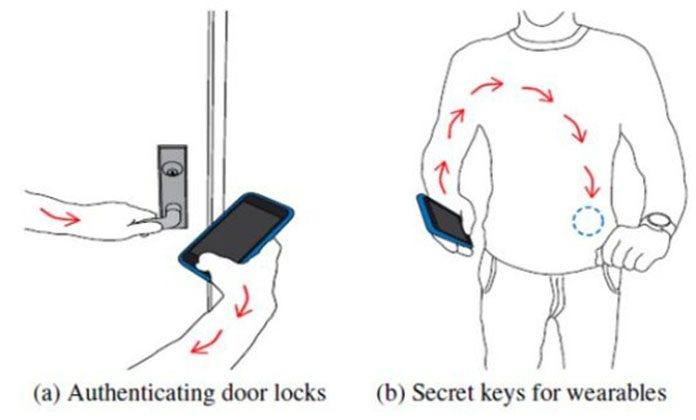Scientists from the University of Washington found a new approach of sending secure passwords through the human body. They used low-frequency transmissions generated by fingerprint sensors and touchpads on consumer devices.
Nowadays biometric sensors are used as an input device. The mindblowing fact is the fingerprint sensor for the first time can be re-purposed to transfer information that is confined to the body. These transmissions give secure way to pass authenticating information between devices that touch parts of your body. For example, a phone or device that recognize your identity by asking you to type in passwords.
These new signals influence the signals already generated by fingerprint sensors to transmit data in new ways.
Co-lead author Merhdad Hessar said, “I want to open a door using an electronic smart lock. I can touch the doorknob and touch the fingerprint sensor on my phone and transmit my secret credentials through my body to open the door, without leaking that personal information over the air.”
Scientists tested this approach on iPhone, other fingerprint sensors, Lenovo laptop trackpads and the Adafruit capacitive touchpad. Then, scientists were able to produce usable on-body transmissions on people of different heights, weights and body types. The system also worked when subjects were in motion including while they walked and moved their arms.
The system works in different postures like standing, sitting and sleeping. Scientists systematically examined smartphone sensors. Through this, they will understand which of them generates low-frequency transmissions below 30 megahertz. They used capacitive coupling to sense where your finger is in space. After that, they analyzed the ridges and valleys that form unique fingerprint patterns i.e., passwords.
Normally, sensors use these signals to receive input about your finger. But the UW engineers devised a way to use these signals as output that corresponds to data contained in a password or access code.
This process uses a sequence of finger scans to encode and transmit data. Finger scanning corresponds to a 1-bit of digital data. It does not perform the scan corresponds to a 0-bit.
According to scientists: The technology could also be useful for secure key transmissions to medical devices. For instance, glucose monitors or insulin pumps, which seek to confirm someone’s identity before sending or sharing data.
Scientists achieved bit rates of 50 bits per second on laptop touchpads and 25 bits per second with fingerprint sensors. It is fast enough to send a simple password or numerical code through the body and to a receiver within seconds.
